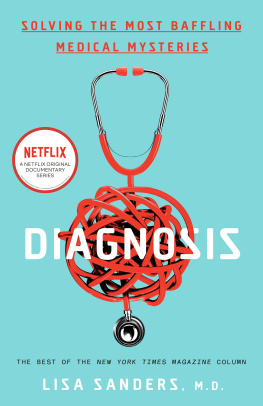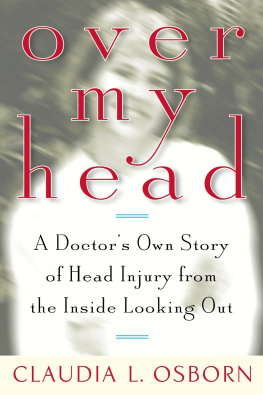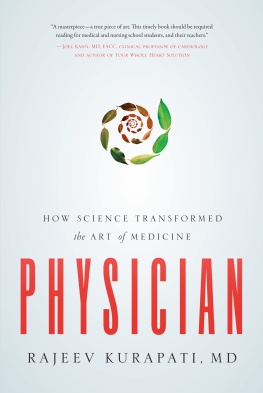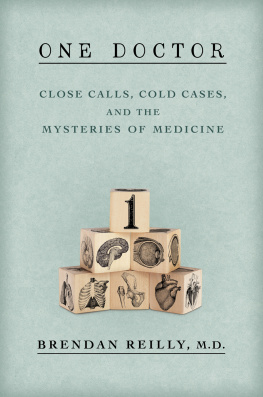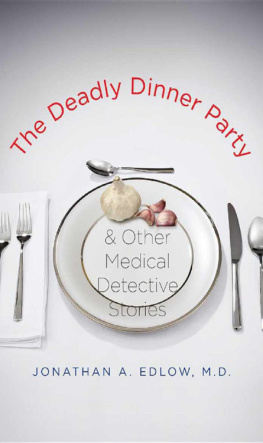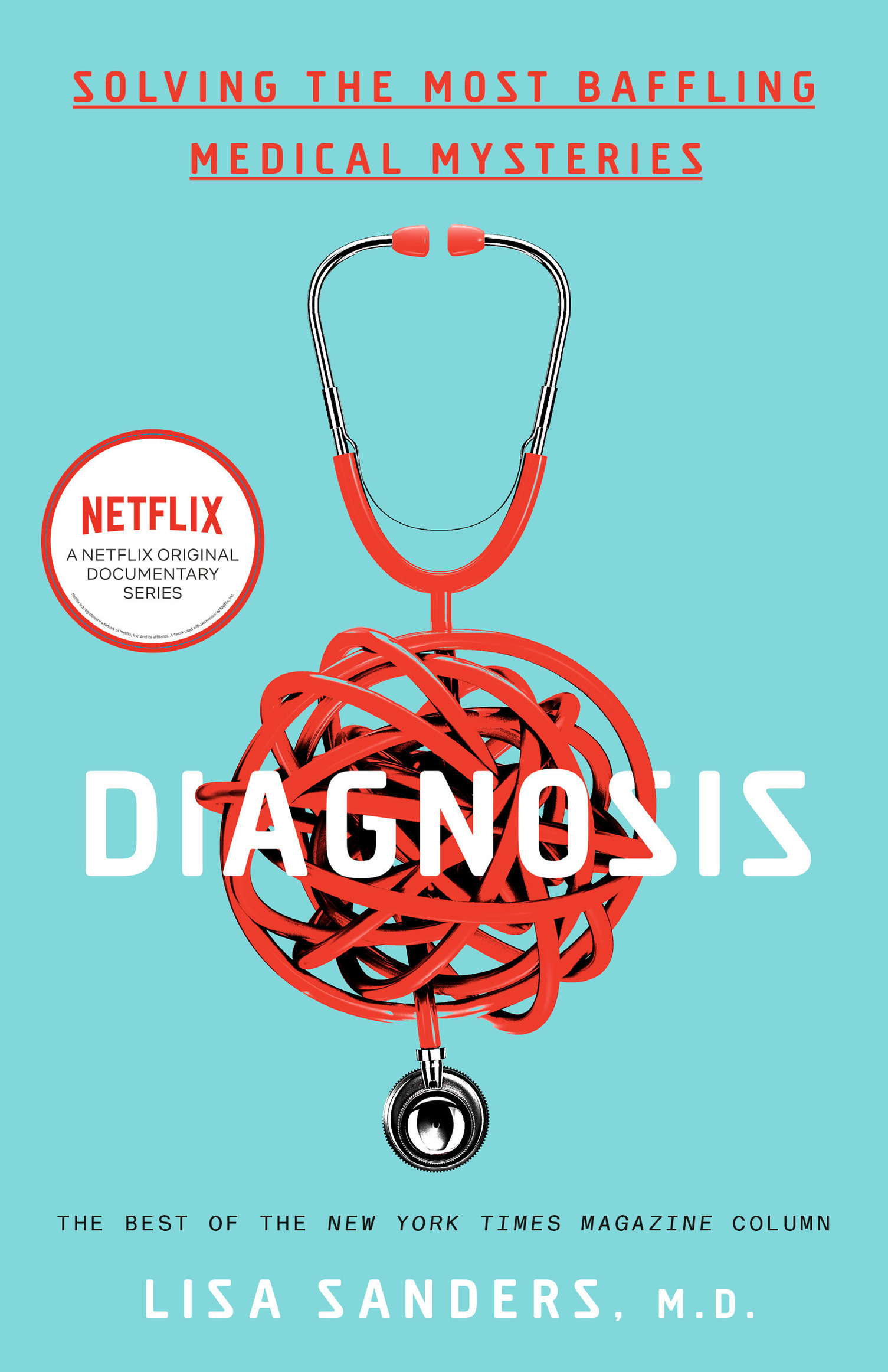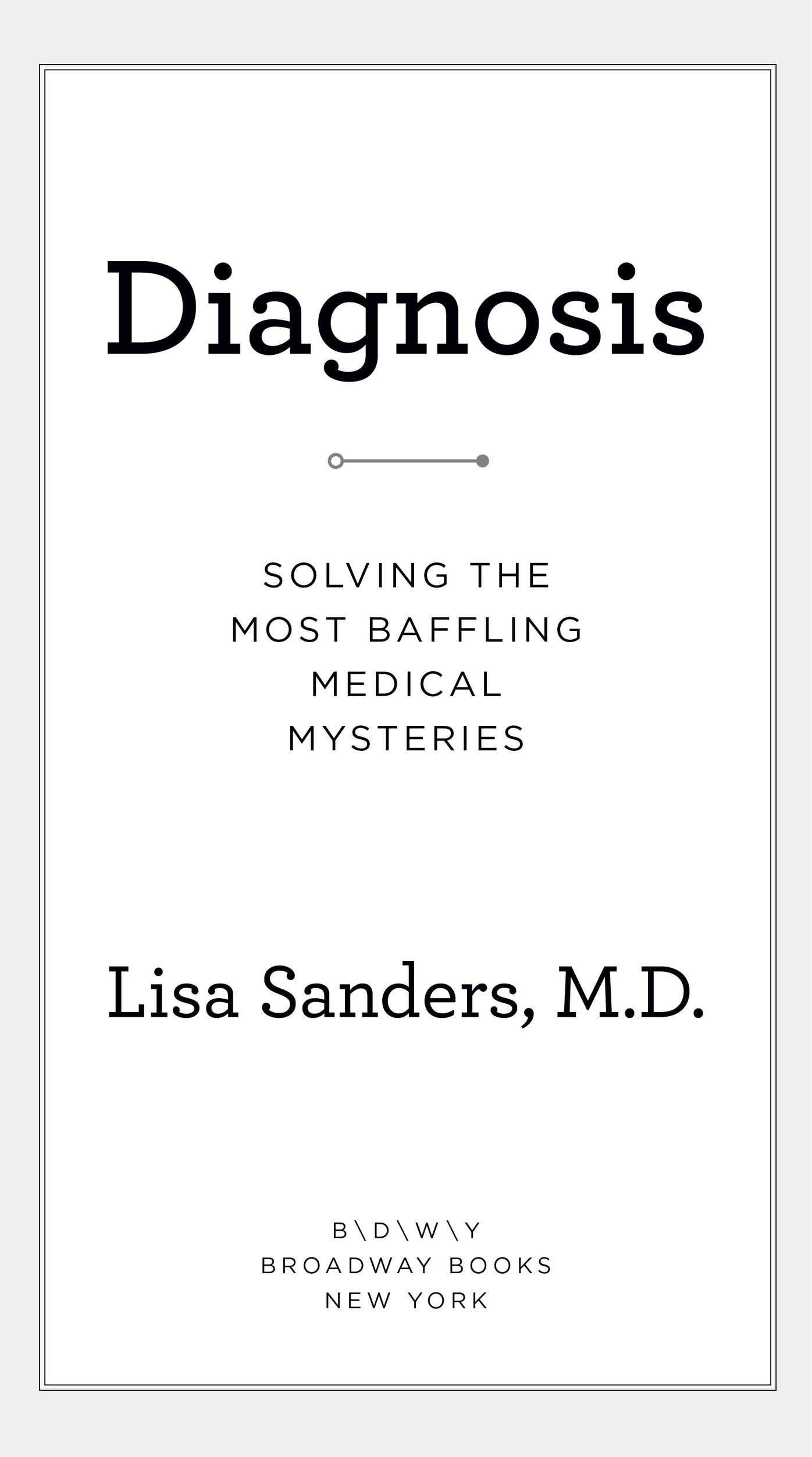All rights reserved.
Published in the United States by Broadway Books, an imprint of Random House, a division of Penguin Random House LLC, New York.
B ROADWAY B OOKS and its logo, B \ D \ W \ Y, are trademarks of Penguin Random House LLC.
NETFLIX is a registered trademark of Netflix, Inc. and its affiliates. Logo used by permission of Netflix, Inc.
Names: Sanders, Lisa, 1956- author.
Title: Diagnosis / Lisa Sanders.
Description: First edition. | New York : Broadway Books, [2019] | Includes index.
Identifiers: LCCN 2019023897 | ISBN 9780593136638 (trade paperback) | ISBN 9780593136645 (ebook)
Subjects: LCSH: Diagnosis--United States--Anecdotes. | Physician and patient--United States--Anecdotes.
INTRODUCTION
Solving the Puzzle
The lights in the doctors office were almost too bright for the fifty-year-old woman to bear, but she forced herself to open her eyes. A young doctor knocked, entered the exam room, and introduced herself. She seemed sympathetic and interested as her patient described her miserable week and the travel that preceded it.
She hadnt felt well since she and her kids had gotten back to Chicago from their two-week trip to her parents home in Kenya. This had been her first visit in nearly a decadesince before her kids were born. And now that they were old enough, she had been eager to show them where she grew up. She had gotten them all the right vaccines, and she had made sure they took the medicine to prevent malaria every single day. She didnt want the trip, or their memories of this place she loved so much, to be spoiled by illness. It was a great trip. But coming home had been brutal. Her children recovered after a day or two of jet lag. She didnt.
She gave it a week, but every day she felt worse. She was tired, as if she hadnt slept for weeks. She was nauseous. She felt hot and sweaty, like she had a fever. And her body ached like she had the flu. She called her doctors office, but her doctor was out of town. So she found another who, miraculously, was able to see her the following day. And now here she was.
The patient paused, then added, I think Ive felt like this before. When she was seven years old, living in Kenya, she had a bout of malaria. She thought maybe thats what she had now. It sure felt like it.
The doctor noddedit was a reasonable theory. Malaria is endemic in regions like sub-Saharan Africa and the most common cause of fever in travelers returning from there. And since shed had it before, she knew the achy, flu-like symptoms of the blood-loving parasite.
Still, the doctor told her, shed need a little more information. Any other medical problems? Absolutely not. Before her trip, shed been completely healthy. She took no medications. Didnt smoke or drink. Worked in an office. She was divorced and lived with her two children. Shed taken the preventive meds every day, starting two weeks before their trip, as prescribed.
The doctor moved the patient to the exam table. She didnt have a fever, but shed taken acetaminophen earlier that day. She was a little sweaty, and her heart was racing, but otherwise her exam was unremarkable.
Malaria made sense to the doctor. There is a type of malaria in parts of Kenya that isnt killed by the usual prophylactic medications. And if she had already had the infection for more than a week, it was important to start treatment quickly, the doctor told her. She gave the patient a prescription for a three-day course of antiparasitic medications. The woman took the prescription gratefully. She looked forward to feeling better at last.
This is the usual story of diagnosis. A patient feels sick. She recognizes that there is something wrong, but she may wait a day or two before seeking help. Things often get better on their own. But when they dont, she will often seek help from her doctor.
From there, its the doctors job to solve the puzzle. Listening to the patients story is key. In nearly 80 percent of cases, that is where the most important clues can be found. An examination may offer additional clues. Sometimes a test reveals even more. And its up to the doctor to put it all together and make the diagnosis.
Before I went to medical school, all I knew about diagnosis was what Id seen on TV. It was an almost instantaneous one-liner dropped at a dramatic momentjust after the patients opening story of symptoms and suffering and just before theyre whisked away for a life-saving treatment. I believed that diagnosis was a puzzle that I, once I was a doctor, could easily solve.
During med school, I put in the hours to learn the building blocks of diagnosischemistry and organic chemistry, physics, physiology, pathology, and pathophysiology. As I finished my schooling and started on the apprenticeship component of my training, I developed a series of what doctors call illness scriptsdetailed inventories of symptoms and their variations, progressions, and resolutions, which create a picture of a particular disease. Once these scenarios were committed to memory and mastered, they could be deployed as needed. Nausea, vomiting, and diarrhea that rapidly sweeps through a family is a viral gastroenteritis. The sudden onset of fever, body aches, and congestion during flu season means the flu. Or in this case, those same symptoms in a traveler returning from Kenya likely mean malaria. We see the symptoms. We recognize the pattern and immediately know the diagnosis.
Fortunately, that is what happens most of the timeup to 95 percent of the time, according to one study. It is a skill set that deliversmost of the time. But what about those other cases? The 5 percent where the doctor has no answer. Or worse, the wrong answer?
The sick woman thought she had malaria. So did her doctor. But after the three days of pills, she felt even worse. She was so weak she could hardly move. She vomited nonstop. She felt feverish. Sweaty. Her heart pounded furiously. She couldnt eat for four days and couldnt even get out of bed for two. Finally, she called the doctor, who promptly sent the woman to the emergency room.
In the ER, an examination showed the womans heart was racing and her blood pressure was high. Her white-blood-cell count was dangerously low, and her liver showed evidence of injury. It wasnt clear what was wrong with her, so she was admitted to the hospital.
The doctors in the hospital gave the woman medicine to stop the vomiting. That helped. But after several days it still wasnt clear what had made her so sick in the first place. It clearly wasnt malaria. Shed had three blood smears examined in the lab. And although she wasnt running a fever when the blood was drawnthats when the test for malaria works bestnone of these smears showed any sign of the parasite that causes this potentially deadly illness.

